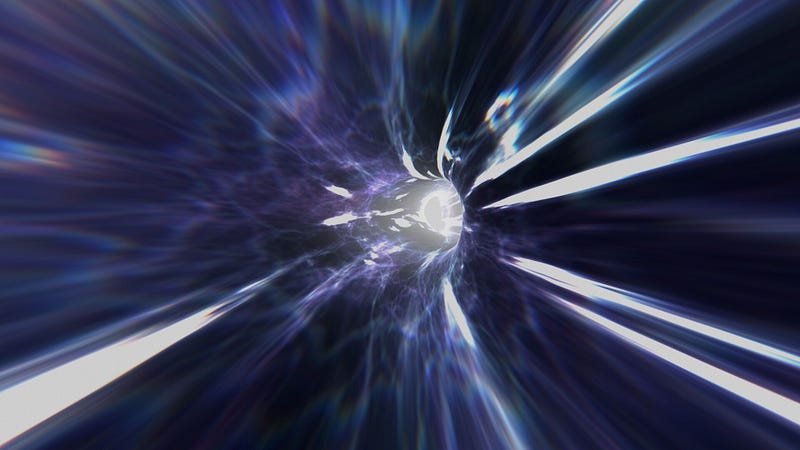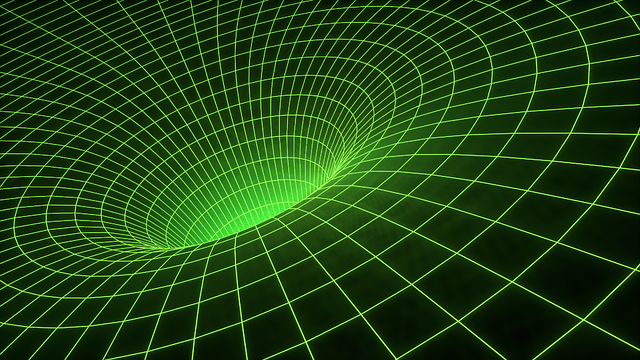Exploring the Mysteries of Wormhole Travel: A Scientific Journey
Written on
Chapter 1: Understanding Wormholes
What insights do recent studies provide about the future of wormhole travel and how can we differentiate a wormhole from a black hole?

The Potential of Interstellar Travel Through Wormholes
The vast distances in interstellar travel pose significant challenges for reaching planets and stars far beyond our solar system. While conventional methods like ion engines and solar sails require fuel and travel at a fraction of light speed, the concept of using a wormhole presents a fascinating alternative. However, theoretical physicists still grapple with the complexities of constructing a viable interstellar wormhole, which introduces numerous hurdles for future travelers.
A major concern with wormhole use is their tendency to collapse during transit. Maintaining a wormhole's stability may necessitate the use of exotic matter, which has unique properties such as negative energy density and pressure. This exotic matter, repelled by gravity, remains elusive, as it originates from quantum experiments and its availability in sufficient quantities is still undetermined.
Using exotic matter might be essential to manipulate space-time effectively, requiring substantial mass to achieve this. The discussion around exotic matter and wormholes has been extensive, with some theories being dismissed. This raises the question: Are there alternative methods to create a wormhole that do not depend on such exotic energy? This is a critical challenge for those aiming to develop practical wormholes for interstellar exploration.

The Concept of Black Holes and Wormholes
In 2015, three physicists proposed an intriguing idea: utilizing two black holes to create a wormhole. Black holes, formed from the collapse of massive stars into singularities, could theoretically be interconnected to facilitate wormhole travel. However, the logistics of linking two black holes separated by immense distances remains a topic for further exploration.
The characteristics of a wormhole are still not fully understood by theoretical physicists. Assuming one could keep a wormhole open, developing a spacecraft capable of withstanding the extreme forces during travel is another significant hurdle. Ultimately, empirical testing of an unmanned vehicle through a wormhole may be the only way to verify these theories.
The Historical Context of Wormholes
The concept of wormholes dates back to 1935 when Albert Einstein and his colleague confronted a dilemma within Einstein's General Relativity. This issue was previously highlighted in a work by Karl Schwarzschild, which presented singularity points where mathematical quantities became infinite, leading to a flawed understanding of mass.
Instead of accepting this limitation, Einstein and Rosen proposed a modification to Schwarzschild’s theory, effectively resolving the issue and conceptualizing what we now refer to as the Einstein-Rosen bridge, or wormhole. They illustrated this through a mathematical framework that connected two identical sheets, with a bridge representing a particle linking them.
Although the term "wormhole" was not coined until 1957 by John A. Wheeler and Charles Misner, their work laid the foundation for a burgeoning interest among physicists and science fiction authors alike regarding wormholes as a potential travel mechanism.

Differentiating Between Wormholes and Black Holes
The similarities between black holes and wormholes lead to a critical question: could a black hole discovered on Earth actually be a wormhole? In a 2015 study by Takayuki Ohgami and Nobuyuki Sakai from Yamaguchi University, the researchers examined this possibility. They identified fundamental differences in the physics governing each phenomenon.
Ohgami and Sakai noted that photon trajectories in wormhole space-time could exhibit distinct qualitative properties. They also recognized that both a black hole and a wormhole would display rings of radiation, but the intensity of these rings could be a distinguishing factor. Their analysis suggested that high-resolution observations could potentially differentiate between an Ellis wormhole and a black hole in the near future.
The implications of distinguishing between these two cosmic entities are profound. Identifying a wormhole could hint at the existence of intelligent life elsewhere in the universe and offer insights into the potential for alien travel through wormholes. However, it is also possible for two singularities from black holes to merge, creating a phenomenon referred to as a white hole, which complicates the matter further.
The ongoing study of black holes and their interactions with light may provide valuable insights into whether the characteristics of wormholes proposed by Ohgami and Sakai hold true.
Explore the visual representation of traveling through a wormhole in this captivating video.
Join Professor Juan Maldacena as he discusses the potential for human travel through wormholes in this enlightening video.